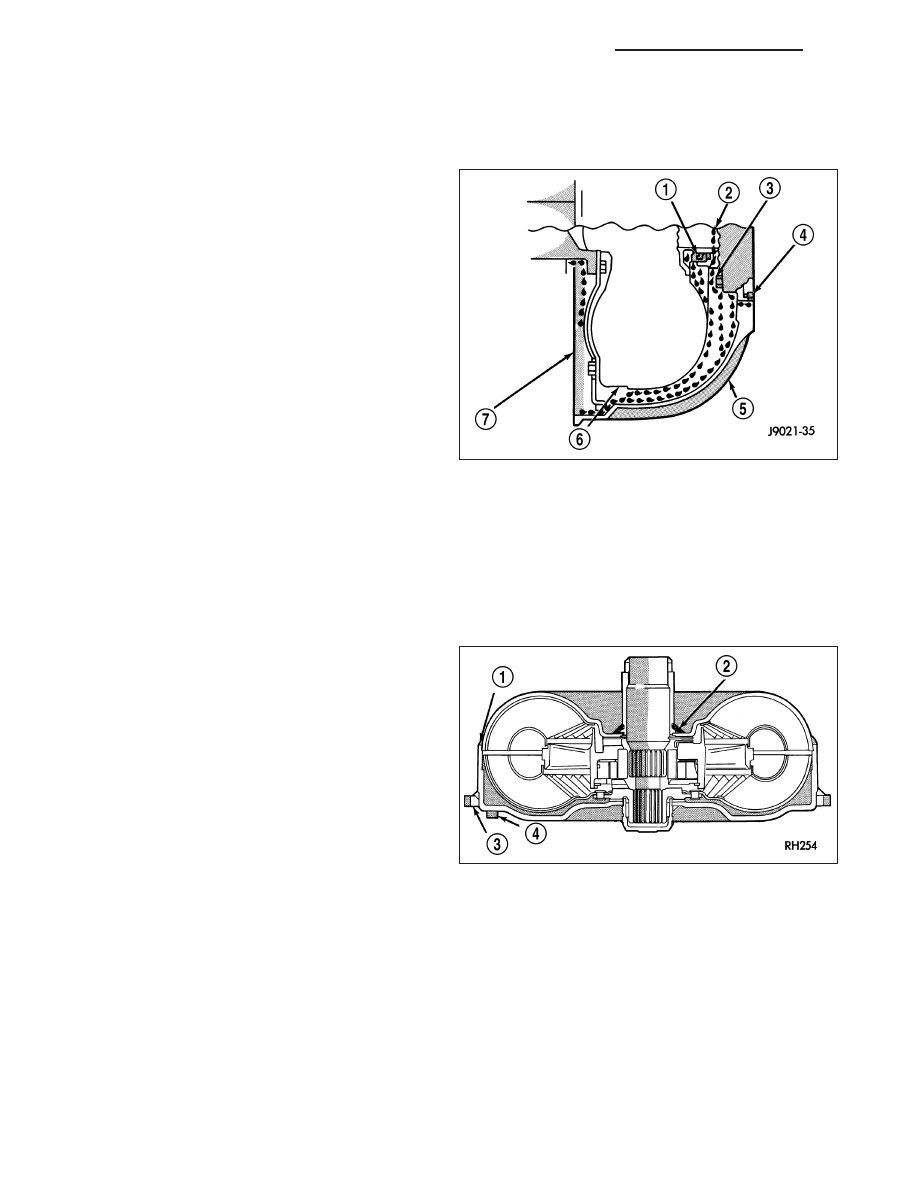Dodge Dakota (ND). Manual - part 966

FLUID LEAKAGE
FLUID LEAKAGE - TORQUE CONVERTER HOUSING AREA
When diagnosing converter housing (5) fluid leaks,
three actions must be taken before repair:
1. Verify proper transmission fluid level.
2. Verify that the leak originates from the converter
housing area and is transmission fluid.
3. Determine the true source of the leak.
Fluid leakage at or around the torque converter area
may originate from an engine oil leak (7). The area
should be examined closely. Factory fill fluid is red
and, therefore, can be distinguished from engine oil.
Some suspected converter housing fluid leaks may
not be leaks at all. They may only be the result of
residual fluid in the converter housing, or excess fluid
spilled during factory fill, or fill after repair. Converter
housing leaks have several potential sources. Through
careful observation, a leak source can be identified
before removing the transmission for repair.
Pump seal (1) leaks tend to move along the drive hub and onto the rear of the converter. Pump o-ring or pump
body leaks follow the same path as a seal leak. Pump attaching bolt (3) leaks are generally deposited on the inside
of the converter housing (5) and not on the converter itself. Pump seal (1) or gasket (4) leaks usually travel down
the inside of the converter housing.
TORQUE CONVERTER LEAKAGE
Possible sources of torque converter leakage are:
•
Torque converter weld leaks at the outside diam-
eter weld (1).
•
Torque converter hub weld (2).
STANDARD PROCEDURE - ALUMINUM THREAD REPAIR
Damaged or worn threads in the aluminum transmission case and valve body can be repaired by the use of Heli-
Coils
T
, or equivalent. This repair consists of drilling out the worn-out damaged threads. Then tap the hole with a
special Heli-Coil
T
tap, or equivalent, and installing a Heli-Coil
T
insert, or equivalent, into the hole. This brings the
hole back to its original thread size.
Heli-Coil
T
, or equivalent, tools, and inserts are readily available from most automotive parts suppliers.
21 - 256
AUTOMATIC TRANSMISSION 42RLE - SERVICE INFORMATION
ND